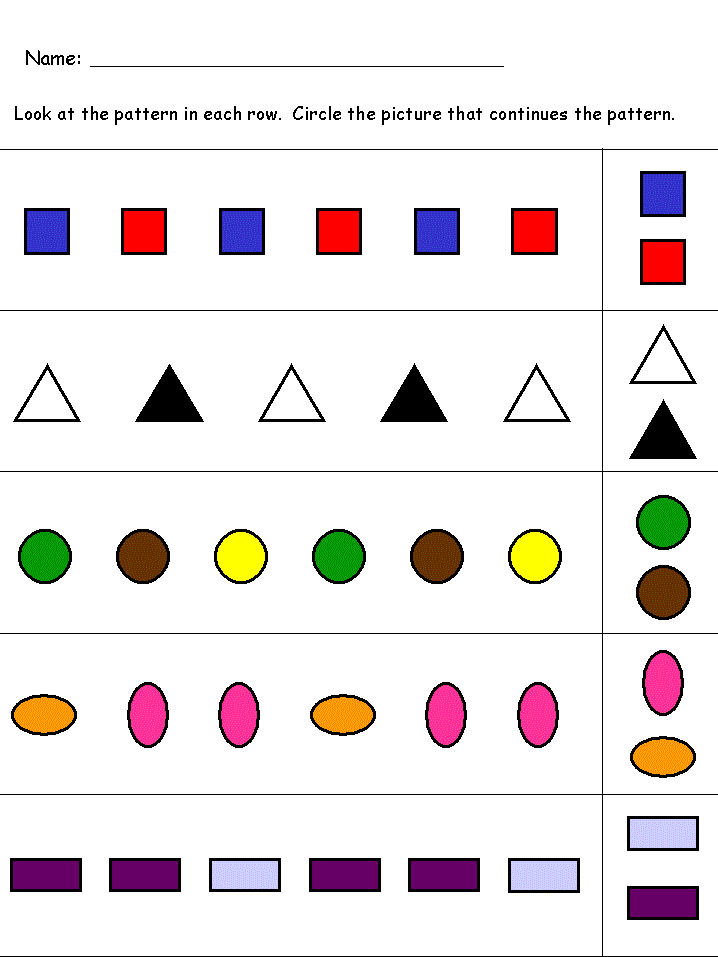Patterns in math play a crucial role in helping us comprehend complex concepts, making it easier to solve problems and apply mathematical principles in real-life situations. Recognizing these patterns not only enhances our analytical skills but also fosters a deeper appreciation for the beauty and intricacy of mathematics. In this article, we will delve into the various types of patterns in math, their significance, and how they can be utilized effectively in different mathematical contexts.
Throughout history, mathematicians have discovered that patterns are at the core of many mathematical theories and applications. From simple sequences to complex functions, identifying and understanding patterns can lead to significant breakthroughs in problem-solving. This article aims to provide a comprehensive overview of patterns in math, catering to both students and educators.
By exploring this topic, readers will gain insights into how recognizing patterns can improve their mathematical reasoning and problem-solving abilities. Furthermore, we will provide practical examples and engaging exercises to strengthen your understanding and application of mathematical patterns.
Table of Contents
- What Are Patterns in Math?
- Types of Patterns in Math
- Importance of Patterns in Math
- Applications of Patterns in Math
- How to Identify Patterns in Math
- Examples of Patterns in Math
- Teaching Patterns in Math
- Conclusion
What Are Patterns in Math?
Patterns in math refer to regular and predictable arrangements of numbers, shapes, or other mathematical elements. These patterns can appear in various forms, such as sequences, series, or geometric arrangements. Understanding patterns is fundamental to mathematics, as they often provide insights into how to approach complex problems and derive solutions.
Characteristics of Mathematical Patterns
- Repetition: Patterns often involve repeated elements or sequences.
- Order: There is a specific arrangement or sequence that can be identified.
- Predictability: Once a pattern is established, future elements can be predicted based on the established rules.
Types of Patterns in Math
There are several types of patterns in math that can be categorized based on their characteristics and applications. Here are some of the most common types:
1. Number Patterns
Number patterns consist of sequences of numbers that follow a specific rule. Examples include:
- Arithmetic sequences: Each term increases by a constant value (e.g., 2, 4, 6, 8).
- Geometric sequences: Each term is multiplied by a constant value (e.g., 3, 6, 12, 24).
2. Geometric Patterns
Geometric patterns involve shapes and their arrangements. These can be found in tessellations, symmetry, and fractals. Examples include:
- Symmetrical designs, such as mandalas.
- Fractals, which exhibit self-similarity at different scales.
3. Algebraic Patterns
Algebraic patterns involve relationships between variables and can be expressed through equations. Examples include:
- Linear relationships: Represented by the equation y = mx + b.
- Quadratic relationships: Represented by the equation y = ax^2 + bx + c.
4. Statistical Patterns
Statistical patterns arise from data analysis and can reveal trends and correlations. Examples include:
- Histogram representation of data frequency.
- Correlation coefficients that measure the strength of relationships between variables.
Importance of Patterns in Math
Recognizing patterns in math is essential for several reasons:
- Problem Solving: Patterns help in breaking down complex problems into manageable parts.
- Efficiency: Identifying patterns enables quicker calculations and predictions.
- Conceptual Understanding: Patterns provide a deeper understanding of mathematical concepts.
Applications of Patterns in Math
Patterns in math have numerous applications across various fields, including:
1. Science and Engineering
Mathematical patterns are crucial in scientific research and engineering design. For example:
- Understanding wave patterns in physics.
- Applying geometric patterns in architectural design.
2. Economics and Finance
Patterns in statistics and data analysis are used to forecast economic trends and make investment decisions. Examples include:
- Identifying market trends using historical data patterns.
- Using regression analysis to predict future financial performance.
3. Computer Science
In computer science, patterns are utilized in algorithms and data structures. For instance:
- Recognizing patterns in data mining.
- Applying mathematical patterns in machine learning algorithms.
How to Identify Patterns in Math
Identifying patterns in math requires observation and analytical skills. Here are some strategies to effectively recognize patterns:
- Look for repetition in sequences or arrangements.
- Analyze relationships between numbers or variables.
- Visualize patterns using graphs or diagrams.
Examples of Patterns in Math
To illustrate the concept of patterns in math, let's explore a few examples:
1. Fibonacci Sequence
The Fibonacci sequence is a classic example of a number pattern where each term is the sum of the two preceding ones:
- 0, 1, 1, 2, 3, 5, 8, 13, 21, ...
2. Geometric Progression
A geometric progression where each term is multiplied by a constant factor:
- 2, 4, 8, 16, ... (multiplied by 2 each time).
3. Symmetrical Patterns
Patterns found in nature, such as the petals of flowers or the arrangement of leaves, exhibit symmetry and regularity.
Teaching Patterns in Math
Educators can use various methods to teach students about patterns in math effectively:
- Incorporate hands-on activities and visual aids.
- Encourage students to explore patterns through games and puzzles.
- Utilize technology, such as software and apps, to visualize patterns.
Conclusion
In conclusion, understanding patterns in math is vital for developing mathematical skills and problem-solving abilities. Recognizing these patterns not only facilitates comprehension of complex concepts but also enhances our ability to apply mathematical principles in various fields. We encourage readers to explore the world of mathematical patterns and practice identifying them in everyday life.
We invite you to leave a comment below sharing your thoughts on patterns in math or any personal experiences you've had with mathematical patterns. Don't forget to share this article with others who might find it useful, and check out our other articles for more insights into the fascinating world of mathematics!
Article Recommendations
- Nfl Trey Gregory Alford Signing Bonus Latest Details
- How Many Times Has Jerry Seinfeld Been Married A Complete Breakdown
- Mitch Mcconnell I Decide Key Policies Actions


